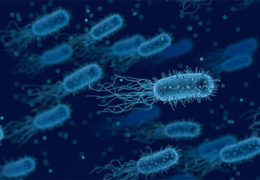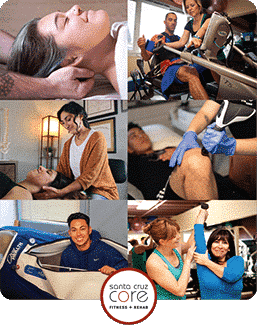Recovery from injury can be supported by a healthy diet. During the healing process, the body allocates many of its nutrient and energy resources that we maintain by eating, to repair. However, optimal injury recovery does not always translate to eating more but to eat better
For most, recovery can be supported by a well-balanced diet that meets daily macro- and micronutrient demands. However, those for whom gaining weight and losing muscle during recovery is a concern may want to pick and choose their recovery diet more carefully.
Metabolic Demands of Injury Recovery
Healing increases metabolism as the body works to build and breakdown tissues. This means more energy (in the form of calories) is being allocated to the healing process. So, does this mean we should eat more to expedite the healing process? Not necessarily. Depending on the severity of the injury, a person may be less active (and burn fewer calories) than usual. The energy saved from this decreased daily activity may be more than enough to support the energy demands of healing.
Athletes who train extensively may even need to lower their food intake when injured. The caloric intake they are used to during for training may be far greater than that required by healing. In such cases as this, seek the help of a registered dietitian as calories and nutrients need to be carefully monitored.
Four Phases Healing
Healing of wounds happens in four phases, each with a unique set of dietary recommendations.
Phase 1- Hemostasis: This phase involves the body’s immediate response to tissue injury. It involves the constriction of blood vessels to the area and the formation of a platelet plug. This first response is meant to stop bleeding. This first phase happens so quickly that little can be done (nutrition-wise) to improve its outcome once the injury happens. Hopefully, your diet was well-balanced beforehand.
Phase 2- Inflammation: This phase is characterized by the body’s immune response to an injury. Repair mechanisms and immune cells migrate to the injured area, which removes cellular debris, limits further damage, and signals the migration of more repair mechanisms.
Due to the painful nature of the inflammatory process, injured individuals are often tempted to take over-the-counter medications such as ibuprofen. However, since anti-inflammatory medication actually disrupts the body’s natural healing process, the consumption of specific foods is a viable alternative for controlling excess inflammation. Olive oil (oleocanthal) and omega-3 fatty acids have anti-inflammatory properties, some rivaling ibuprofen. Antioxidants like vitamin C and E help neutralize free radicals (harmful chemical reactions within the body) which contribute to excess inflammation.

Phase 3- Proliferation: This phase involves rapid cell division, protein synthesis, and the formation of new blood vessels. This phase works to close the wound and restore integrity. Foods rich in protein will provide the amino acid building blocks for synthesizing collagen and other proteins. Antioxidants (like vitamin C) are also needed to synthesize protein and protect against free radical damage.
Phase 4- Remodeling: During this phase, the tissue matures and is remodeled towards its former self. Like proliferation, remodeling also involves extensive protein synthesis to restore the tissue’s strength. Foods rich in protein and antioxidants are important to support this process.
Takeaway
Typically, a well-balanced diet should provide the necessary macro- and micro-nutrients needed to support a healing injury. Macronutrients include carbohydrates, protein, and fats. Micronutrients include vitamins, minerals, and phytochemicals. It is essential to get these from whole foods that are minimally processed and supplement.
While some nutrients such as protein and antioxidants are recommended for certain phases of healing, this does not always mean eat more of them or supplements. Rather, make sure that these are a part of your daily diet. In special cases where weight-gain or muscle-loss are concerns, consult a registered dietitian for a personalized eating plan.
References:
- Tipton, Kevin D. “Nutritional Support for Exercise-Induced Injuries.” Sports Medicine (Auckland, N.Z.), Springer International Publishing, Nov. 2015, https://www.ncbi.nlm.nih.gov/pmc/articles/PMC4672013/.
- Wallace, Heather. “Wound Healing Phases – Surgery-Plastic.” StatPearls, StatPearls Publishing, 10 Aug. 2019, http://knowledge.statpearls.com/chapter/surgery-plastic/34001/.
- Lucas, Lisa, et al. “Molecular Mechanisms of Inflammation. Anti-Inflammatory Benefits of Virgin Olive Oil and the Phenolic Compound Oleocanthal.” Current Pharmaceutical Design, U.S. National Library of Medicine, 2011, https://www.ncbi.nlm.nih.gov/pubmed/21443487/.









Leave a Reply